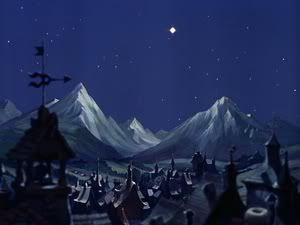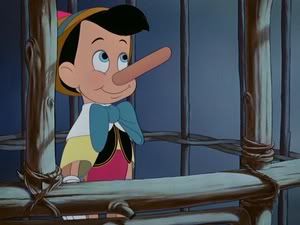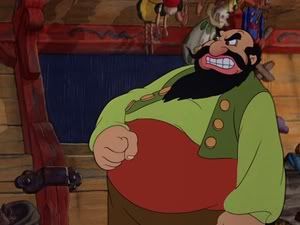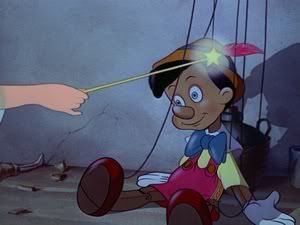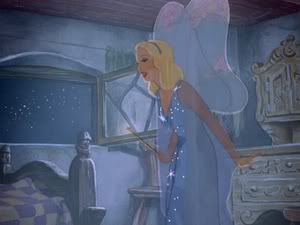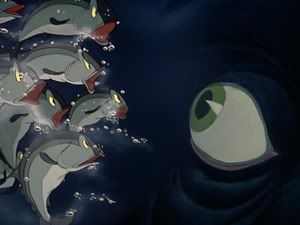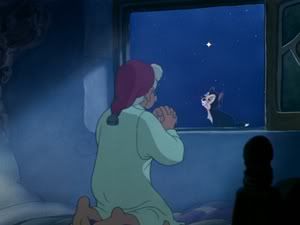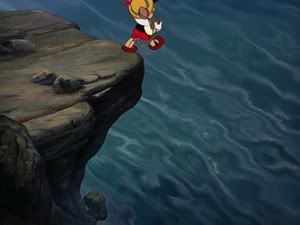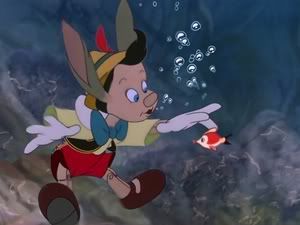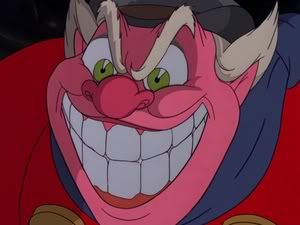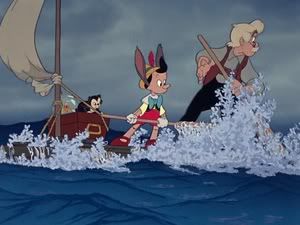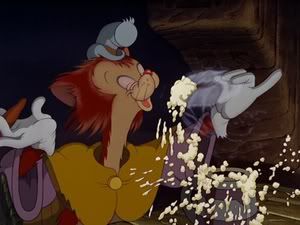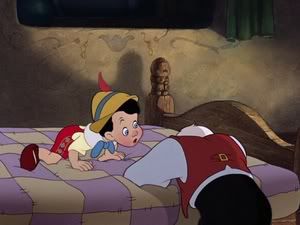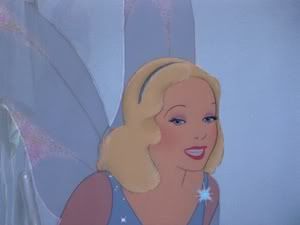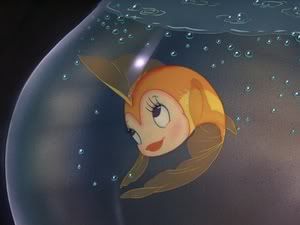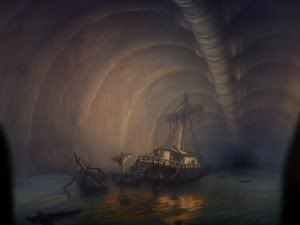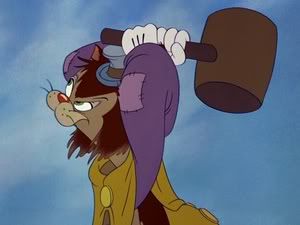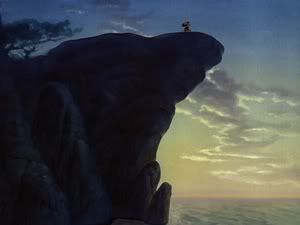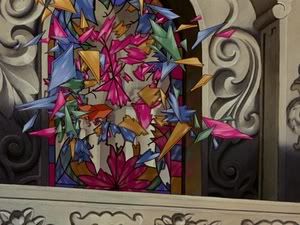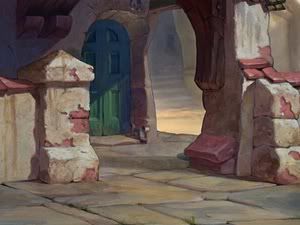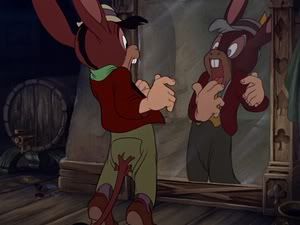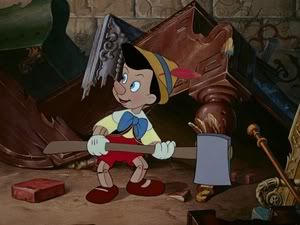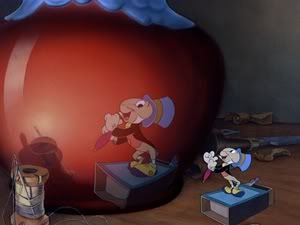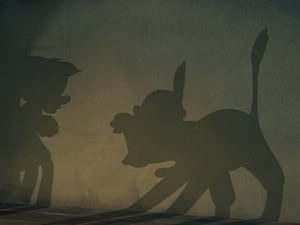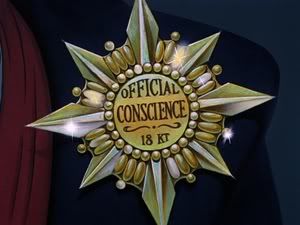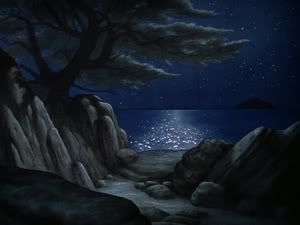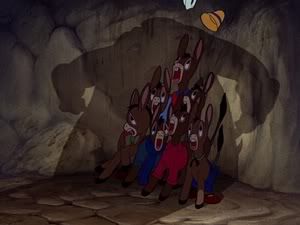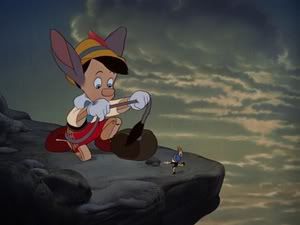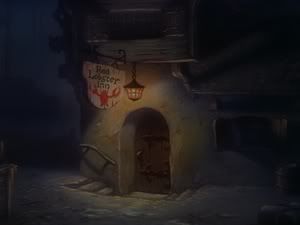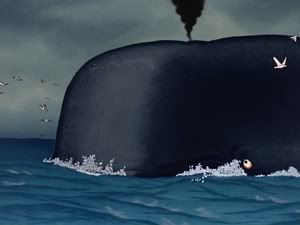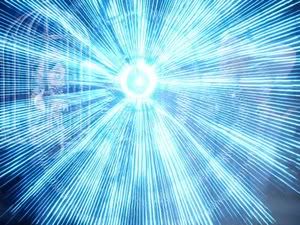Post by No Personality on Jan 1, 2011 15:45:39 GMT -5


(ALL IMAGES BELOW ARE ENLARGEABLE - CLICK THEM)
Synopsis (by "Luke Bonanno"):
"Based loosely on Carlo Collodi's 1883 novel, Pinocchio tells the story of an old woodcarver and the marionette he builds which comes to life. The man, Geppetto, puts the finishing touches on his creation (who he names "pine eye" in Italian) and wishes on a star that the puppet could be a real boy. While he sleeps, the Blue Fairy pays a visit and grants the wish provisionally. She appoints our oft-flustered guide Jiminy Cricket as the boy's conscience, who will help him choose right over wrong. When Geppetto awakens to find he essentially has a son, all appears to be right in this undefined European village. But Pinocchio's path to real boyhood is filled with obstacles. In an unusual design that Disney hasn't recreated since, the villains basically outnumber the kind-hearted folks here. While walking to his first day of school, Pinocchio encounters an anthropomorphic fox and cat. Calling himself "Honest John" and doing all the talking, the fox encourages the boy to try a life in theatre, referring him to Stromboli. This puppeteer instantly cashes in on the spectacle of a marionette who needs no strings to walk or talk.
The lucrative arrangement soon proves to be unfavorable and an imprisoned Pinocchio needs the Blue Fairy to set him free. In the process, Pinocchio discovers his nose grows each time he stretches the truth. Further temptation arises when Honest John and his mute sidekick are enlisted by a twisted Coachman to help round up mischievous boys for a trip to Pleasure Island. There, Pinocchio smokes, drinks, and plays pool with his smart-alecky new best friend Lampwick. Another rescue is needed, this time from a more terrifying fate. The final act brings Pinocchio and Jiminy to the sea, where Geppetto and his pets have been swallowed whole by Monstro the whale. Just dropping the massive mammal's name causes aquatic creatures to rush away, but eventually a reunion is made. It's followed by an adventurous climax, a close call, and the inevitable resolution to wrap up everything and leave viewers fulfilled."
Observations (mine):
Tone and suggestion are two of the most important things to Disney's fantasy films. Because, although Disney weren't the first filmmakers to try and take the audience away from reality (and Disney themselves admired and were influenced by works of horror- another genre that required a distance from reality), their films were perhaps the first experiences rooted in pure fantasy. When Disney started making feature length films in the 1930's, they were all based on fairy tale books and famous fantasy stories. At least, by now the story of Pinocchio is world-renowned and the film market has been cluttered with several different versions of it. Few (or no other) animated if I'm recalling correctly. The first question I'd like to ask and answer with these dedication articles is- what has made the film so special that it's endured all these years?
Well, when I first brought the film to the Steve board's attention, it was in an article about Disney DVD's. What I didn't indicate the first time 'round was that Disney's celebrated "Platinum Edition" line originallly did not include a place for Pinocchio. For quite some time, the studio considered it a much less profitable film than the likes of Snow White and the Seven Dwarfs, Bambi, Cinderella, The Jungle Book, and Lady and the Tramp. Even though the film still received very high-profile VHS releases with tons of publicity, spawned one of the most famous songs in the studio's history (many say- their calling card) with "When You Wish Upon a Star" (every single bit as recognizable as Tinkerbell, the little fairy that graces, in motion, the front of every magical screen and title page they produced in the era of home entertainment), and created a long-running beloved character which appeared in other Disney films and TV specials, Jiminy Cricket (sort of the male version of Tinkerbell in a way: pint-sized, fast-moving, and is often seen flying around with the use of his ever-handy umbrella... so obviously, he himself was an influence on Mary Poppins).
Yeah, Pinocchio is legend. And it's true that the film was not financially successful when it was originally released in the 1940's. But there's a fact that is always important to consider along with this information. Their previous smash-hit, Snow White and the Seven Dwarfs, owed its' success to the fact that it was distributed all around Europe as well as America. Unfortunately, in the very early 40's, the world war that was beginning to take shape devastated Europe before Pearl Harbor was bombed, severing almost all of that market from Disney's revenue. Although most people feel none of this should have ever happened and it will always be viewed as a tragedy, it did happen, it shaped Disney into what it became in the 40's, and in spite of it and in the face of potential total bankruptcy- it didn't affect the quality of the work of the Disney animators or stifle their ambitions.
Regardless of any fall from grace in the eyes of idiotic DVD executives, this film was one of the studio's most ambitious undertakings in their entire history. What's special about it is that it's easily their most ironic and twisted film, perhaps their darkest and most bleak, many have said- their scariest (sorry, Angela Lansbury... she said on the Snow White DVD that that film was Disney's scariest: not by a long shot, babe), and a truly anarchic morality ploy. I hope to address all of these, but let's start with that last one first. Pinocchio is a film (I want to put a lid on any comparisons to the original story, since I can't claim expert on that sort of thing) that some would seem to pride on Disney that it teaches a real lesson. If that is so, the film's concern is to show us how to be good. What is right and wrong. But in truth, this film couldn't care less what you do with your choices. It just shows us, deadfaced, what will happen in its' world if you screw up. And it isn't a pretty picture.
I'm referencing, almost exclusively, the latter half of the Pleasure Island scenes. In case you've lost any appreciation for what did happen, let me compound upon that trauma. A hefty percent of the child population of the animated universe is whisked away on carriage and boat to said Island, a lawless carnival town where visitors are encouraged to smoke, destroy property, beat each other up, eat all they want, be rude and completely ignore the safety and well-being of others. That can never be and most likely will never be viewed as anything other than end-of-days stuff. Anarchy on a biblical scale. But what is it, really? It's just letting the male gender loose and letting it do what it does naturally: destroy. I'll get back to that last thought later, trust me. In the meantime, I think we can tell this is a rather busy set-up for a big fall.
Immediately after this, Jiminy makes his way throughout the scene. It was night when everyone arrived and it's still night now. But... where are all the kids? They were here just a minute ago when all the ruckus was going on (we assume that hours have passed between that and a fade-to-black). But now, as Jiminy comments: the "place is like a graveyard." I think you remember what happened to all the kids. My job is to put it in perspective and it gives me a rare vindicated glee to tell you that: trying to be men is what got them in trouble. One could get all bent out of shape trying to make a religious connection and say the message is about deviating from God's plan. This is where the glee comes in. This movie is saying it's never okay to act like a selfish, irresponsible pig. That destruction of all kinds - including toward humanity itself (a product of hate and intolerance), which many adult men practice, is a crime. This forces us to realize that religion has nothing to do with the choices we make.
Pinocchio cold-heartedly dispatches its' tour bus-load of Hostel-esque ne'erdowells in a way that makes Jiminy's "graveyard" crack frighteningly come to life. First of all, what do you think the Coachman and his staff of shadow-coats (whose black cloaks in many regards bear horrifying resemblance to those of a classic executioner... a full-dressed one, at least) did with the donkeys who could still talk? That's the only thing left to your imagination. What you do know is that, at this incredibly young age, these boys' lives are over. They look like donkeys. But what we perceive as human features- no one else ever would. That means that being sold into slavery isn't the only tragedy of this fate. This isn't the beginning of a new life, it's the end of their old one. If one were to continue a religious analogy- it's the beginning of hell within the span of a life on Earth. Does that mean these boys are destined for a double-hell? Depends on which Bible you read.
How does that grab ya? And it's all the scarier that we see the boys as donkeys being engaged in conversation for the final time. They are actually being given something of a platform to speak. They can voice their sorrow and fear and plead for their lives. Which they do. Tearfully. But only as a means to consign themselves to either a lifetime of grueling, abusive work in the salt mines or what may well be their executions. They don't know. I guess now is the time to question the signifcance of the black coats. Could merely be Disney's way of suggesting evil (they do love their shadow creepers and darkness-cloaked devils)... or they could have a practical purpose (that inference is ideally best left to your imagination, but I don't trust other people's imaginations anymore: I'm talking about keeping splattered blood from staining their clothes or skin).
At this point, it's actually a good idea to ask oneself- is there a lighter side to Pinocchio... at all? Yes, but it's a rather goofy one. The film is almost nothing but light-hearted at the start. Jiminy Cricket is a strange sort of mood-lightener. He sets the tone for the film by singing a crooning, time-stands-still ballad, and when we first see him onscreen he seems to be singing to himself. Then, as he starts to narrate his leg of the film, things get interesting. It's not only the first of the film's visual wonders (the bouncing zooms into the window of Geppetto's workshop, starry-night pans through the mountainous skies of the film's quaint village) but also the initiative for a parade of bizarre sexual references. Mr. Cricket is a real ladies' man. He loves wooden ones and the types who can't refuse (blow-up doll, anyone?). And goes weak-at-the-knees for probably the film's only female character other than a fish in a bowl (unless the designs on Geppetto's clocks count), The Blue Fairy.
Speaking of the film's ratio of male-to-female characters... I did leave a certain thought above unfinished: the movie's underlying message about the purpose of the male gender. I was in no way defending the film's silly sex jokes with the paragraph directly above this one or the one to follow this immediately below. If anything, Pinocchio's childish streak is its' greatest flaw. But it eventually pales in the face of its' message about the nature of creation and destruction. The Blue Fairy doesn't explain very much to Pinocchio, nor does anything she says provide an adequate warning to anyone of the dangers that lie ahead in the story. But she is the film's God. A woman acting as the symbol of hope and purveyor of wisdom. If anyone taught Pinocchio the wooden puppet how to sacrifice for love and earn his transformation at the end, it is her. Therefore, if God creates and we destroy- only males in this film are seen as a destructive force by and large (Geppetto himself is the sole exception), and God is a woman (since she never has to answer to anyone herself). A fairly progressive stance considering how many people have pegged Disney as fuddy-dudddies.
Now, I did indict the film for a parade of sexual references. To continue with that, you might be shocked to learn this but Pinocchio has an obsessive fetish for butt references. I once did a counter, but I stopped somewhere in the first 20 or so minutes. Throughout the film, there are literally dozens of references. Most of which take place inside of those first 20. And I'm going to do a counter with you now. 1- Jiminy warms his rear by the fire and yet, can't seem to say that's what he was doing in the narration- is he ashamed? The movie sure isn't. 2- the spanking clock. 3- during "Little Wooden Head," marionette Pinocchio kicks Figaro in the rear. 4- while watching Geppetto and his pets, Jiminy puts his hand on a figurine's rear end and realizes his error soon after. 5- while caught in the gears of Geppetto's clock, Jiminy's rear is bumped by one. 6-
To continue with Pinocchio's virtues... heady animation and a musical atmosphere to match it are impressive enough in their own right. But to support charges of the film's superior artistic ambitions, the film is a pioneer of ironic storytelling. The film may begin with faux-heart warming montages of merry dancing (just a continuation of Snow White's "Silly Song" insane cheerfulness?) and smiling dopes singing. But as soon as we're faced with Pinocchio himself, if you came for sap- you're going to be rather stuck there. Pinocchio as a character does not use logic. He just repeats whatever is said to him. Think about that for a second. Our moral compass is directed by whatever hand is currently stroking him. His naivety is overpowering. He's an idiot, for lack of a better word. He even smiles straight-ahead at several people and just goes... "Why?" By that token, it's nearly an accident that he becomes a hero at film's end.
This leaves the gate open for a large variety of scenes where it's almost amusing to watch the creeps who take advantage of Pinocchio doing so. For the sake of farce, the best would be when fox Honest John decides to give Pinocchio a makeshift doctor's exam. He's not even speaking, he's dancing with words (to a jazzy musical accompaniment). During another sequence, Jiminy renders himself ineffective in the movie by saying, "what does an actor want with a conscience anyway?" Ignoring the obvious behind-the-scenes implication, there's more to this. And it ties Jiminy's role to Honest John's, and silent sidekick Gideon's, interference. The plot sets up that Jiminy is Pinocchio's conscience and that it's his job to keep the termite-meal out of trouble. But he never does. Did you ever stopped to wonder why that is? Hilariously, Jiminy actually disappears completely from the screen several times during the movie. Two of which are while Pinocchio is talking to Honest John. And moments when he is actually supposed to be following him.
Just about all the double-talk and multi-driver story elements revolve around how unaware of anything Pinocchio is. You'd have to say he's very much like Patrick in the SpongeBob SquarePants episode, "Hooky," to the point where the quote "I sense no danger here" could be something Pinocchio might say verbatim. Granted, the irony-soaked cartoons to follow were mostly thinking themselves the literal results of what Pinocchio started. Almost like parodies of it. But of course, Pinocchio walks the walk. An early scene does this particularly well. During Geppetto's moment of merriment and glee at the sight of his puppet come to life, Pinocchio suddenly catches on fire. Boy, that'll put a stop to most anyone's celebration. But, the "little wooden head" doesn't even realize that once that flame gets beyond his glove- he's toast! All he can do is look at himself on fire and say, "ooh, pretty!"
Another great moment, one that starts with a double meaning and serves to bring the tone of the film into the darker realm of "wait a minute, there's danger... and it's too late to do anything about it" is Pinocchio's conversation with traveling puppet show master Stromboli inside his carriage. We all know this guy is trouble and up to no good. But what is he capable of doing, what would he do, and how mean is he? There's only way to find out. By, in effect, giving Pinocchio to him. The scene continues to show us how dumb the puppet is when Stromboli stops himself from flying into a rage over being cheated a gold coin for a steel chain part by handing it over to Pinocchio as payment for his performance in the puppet show. Then, switches over into big trouble when Stromboli maps out his plan to use Pinocchio in the show until he's only good to heat the man's grotesque, obese frame in the form of firewood. Then, he'll do that to our hero. All with devious chuckle and menacing aggressive vocality.
Is Pinocchio a funny film? Despite many brilliant ideas and turns of phrases, etc(.), no. No scene illustrates this better than the at first can-you-believe-your-eyes transformation scene that has become Disney infamy. Pinocchio and Lampwick at the pool hall as they both slowly become donkeys. It starts with wonder, and elevates when the characters start laughing. Here's where the brilliant part comes in: although both are laughing, which one of them is aware that they are both donkeys? Pinocchio. The naive guy with a perpetual dopey demeanor with never the slightest idea what's going on. Even though he has grown ears and a tail, which should be alarming to him, he can't help laughing at Lampwick. Lampwick laughs at Pinocchio's misfortune, not knowing he himself has the same problem. This is the kind of irony you can beat someone with. This coming in on the heels of the famous donkeys in cages scene, Lampwick not only shows us pretty much how the donkeys are allowed to talk but also how they lose their voice, and gives us the impression that he won't be like the other donkeys as he violently seems to lose his mind completely. Future leader of a revolt perhaps?
Pinocchio is both an emotional tug of war between happy and sad and a full-scale epic of raw storytelling power. The famous Monstro chase is regarded by legions of film fans as one of the greatest action scenes of cinema history. The scene of Pinocchio's nose growing is a culmination of all the film's funny sweet and sour poignancy. The music adds a touching side to the film that allows it to be kept in the family genre (which, let's face it, is both shocking when you consider the film's subtexts and the only way we are able to keep seeing Disney's work; that conservative families somehow see themselves as duty-bound to buy Disney's film collections for children). Story turning points are given the freedom to terrorize audiences. And the animation is truly stunning. From characters to backgrounds. And special effects from glowing angels to the glimmering, shimmering surfaces of the water- there's a scene where Pinocchio dives into a huge body of water (ocean?) and during that moment, I always kind of feel like I'm falling too.



